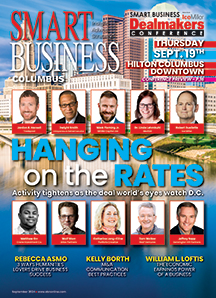
When sales and marketing departments get together to position a product, new or existing, in the marketplace, it is often a challenge to get both parties to agree on what should be a product’s messaging.
While both parties bring great ideas to the table and a business case can often be made for why their ideas should be given importance, there are a few things that should always be considered as a part of a product’s key message — and some that should never be a part of that message.
WII-FM
They often say that a customer’s favorite radio station is WII-FM — “What’s in it for me?” When it comes to technology, this is doubly important, especially as more individuals get involved with the buy cycle.
A salesperson no longer speaks to a room full of tech experts and a few executives that must sign off on the sale. Today, the salesperson may be speaking to business users prior to ever coming in contact with the information technology side of a company.
These users might not know what the brand new development you’ve implemented behind the scenes of your product means. They won’t care if it’s built on the latest and greatest platform. Instead, they want to know what your product being built on the latest and greatest platform means to them.
In this instance, case studies and customer success stories are of tantamount importance. A salesperson needs to have these pieces with key messaging about how the product has helped other similar businesses and how it could potentially help theirs.
Features and functions
But just because a salesperson might be speaking to more people in a company during a sale doesn’t mean they can only focus on the aspirational nature of their product. There will still be people involved in the technical side of a company who need to know whether or not your product can integrate with the systems they currently have in place.
These individuals will be seeking information about the features and functions of your product. They will want to see those latest and greatest improvements and innovations in your product. But they are heavy investors in WII-FM.
They are seeking the same answers to “What’s in it for me?” but with a different focus on how a product will benefit them.
Because of this dual focus on needing to know the technical aspects of a product but also seeking to meet personal and business goals, these features and functions cannot be the main focus of a product’s messaging. It, like case studies and success stories, needs to be a piece of the message of a product when it is taken to market.
Price is never a feature
One thing that should obviously be included in discussions during a sales cycle but should never be considered part of the WII-FM or features and functions is price. Both sales and marketing often want to focus on the price as a benefit of a product. It is frequently seen as a cost benefit that the purchasing company would be receiving the great software, the great support and the huge benefits to their company and selves for the “small price” charged.
This is why the key message of any product, new or existing, in the marketplace needs to be value — the value you bring to a company, the value you bring to a customer, the value you bring to their existing systems. If you convince them that you’re the most valuable offering in the marketplace then price is not an issue. Every product message needs to further the value of that product in the marketplace.
Thomas M. Nies is the founder and CEO of Cincom Systems Inc. Since its founding in 1968, Cincom has matured into one of the largest international, independent software companies in the world. Cincom’s client base spans communications, financial services, education, government, manufacturing, retail, healthcare and insurance. http://tomnies.cincom.com/about.

